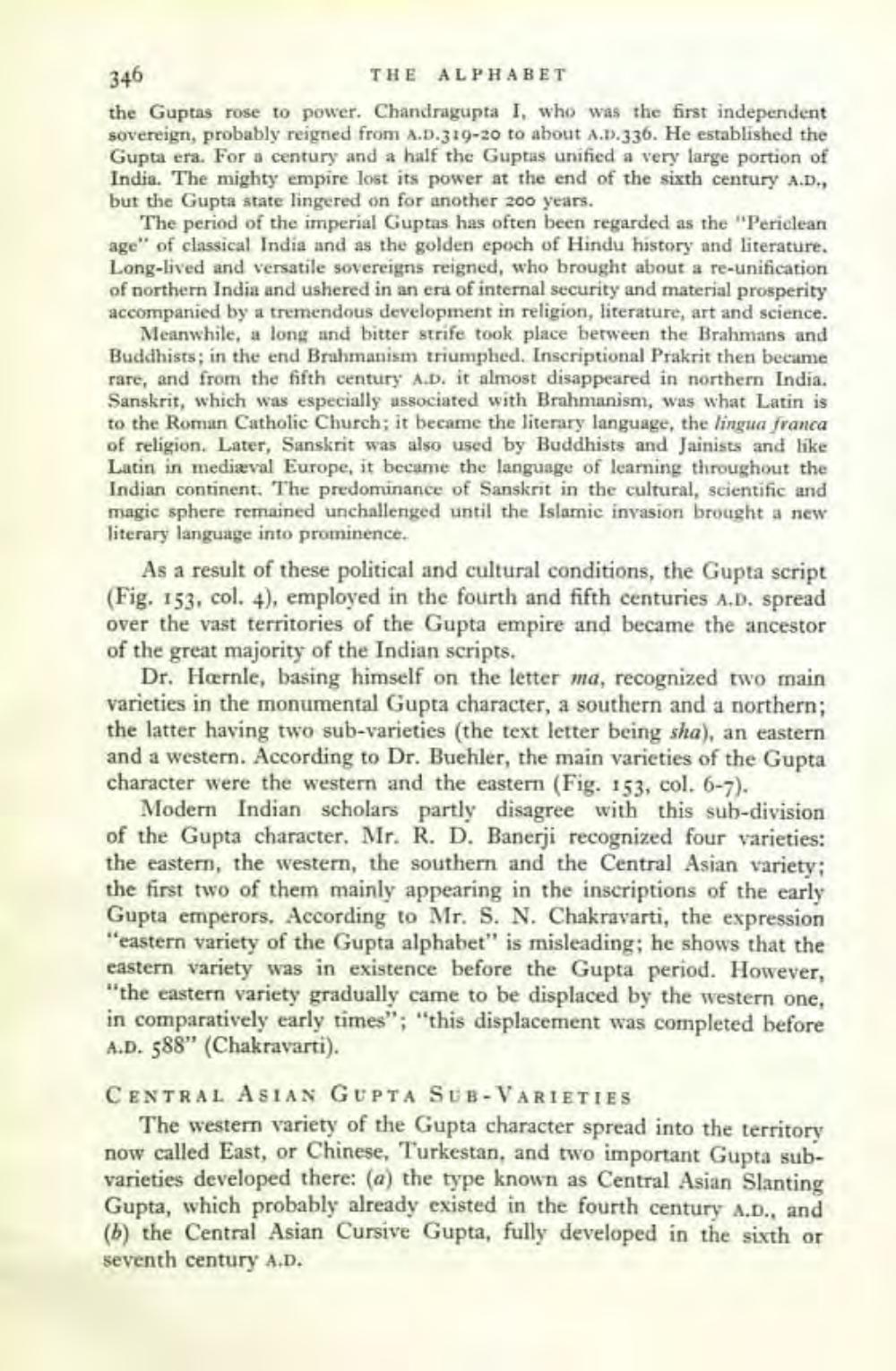________________
346
THE ALPHABET
the Guptas rose to power. Chandragupta I, who was the first independent sovereign, probably reigned from A.D.319-20 to about A.D.336. He established the Gupta era. For a century and a half the Guptas unified a very large portion of India. The mighty empire lost its power at the end of the sixth century A.D., but the Gupta state lingered on for another 200 years.
The period of the imperial Guptas has often been regarded as the "Periclean age" of classical India and as the golden epoch of Hindu history and literature. Long-lived and versatile sovereigns reigned, who brought about a re-unification of northern India and ushered in an era of internal security and material prosperity accompanied by a tremendous development in religion, literature, art and science.
Meanwhile, a long and bitter strife took place between the Brahmans and Buddhists; in the end Brahmanism triumphed. Inscriptional Prakrit then became rare, and from the fifth century A.D. it almost disappeared in northern India. Sanskrit, which was especially associated with Brahmanism, was what Latin is to the Roman Catholic Church; it became the literary language, the lingua franca of religion. Later, Sanskrit was also used by Buddhists and Jainists and like Latin in medieval Europe, it became the language of learning throughout the Indian continent. The predominance of Sanskrit in the cultural, scientific and magic sphere remained unchallenged until the Islamic invasion brought a new literary language into prominence.
As a result of these political and cultural conditions, the Gupta script (Fig. 153, col. 4), employed in the fourth and fifth centuries A.D. spread over the vast territories of the Gupta empire and became the ancestor of the great majority of the Indian scripts.
Dr. Hærnle, basing himself on the letter ma, recognized two main varieties in the monumental Gupta character, a southern and a northern; the latter having two sub-varieties (the text letter being sha), an eastern and a western. According to Dr. Buehler, the main varieties of the Gupta character were the western and the eastern (Fig. 153, col. 6-7).
Modern Indian scholars partly disagree with this sub-division of the Gupta character. Mr. R. D. Banerji recognized four varieties: the eastern, the western, the southern and the Central Asian variety; the first two of them mainly appearing in the inscriptions of the early Gupta emperors. According to Mr. S. N. Chakravarti, the expression "eastern variety of the Gupta alphabet" is misleading; he shows that the eastern variety was in existence before the Gupta period. However, "the eastern variety gradually came to be displaced by the western one, in comparatively early times"; "this displacement was completed before A.D. 588" (Chakravarti).
CENTRAL ASIAN GUPTA SUB-VARIETIES
The western variety of the Gupta character spread into the territory now called East, or Chinese, Turkestan, and two important Gupta subvarieties developed there: (a) the type known as Central Asian Slanting Gupta, which probably already existed in the fourth century A.D., and (b) the Central Asian Cursive Gupta, fully developed in the sixth or seventh century A.D.




